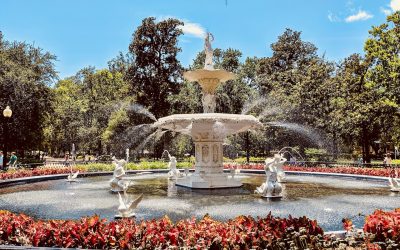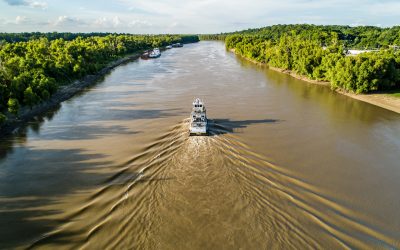All About North Dakota: A Place of Badlands, Snow Angels & Smiling Snakes
Over the past century, North Dakota has been known by several nicknames:
- The Rough Rider State: Before Theodore Roosevelt became the 26th president in 1901, he led a cavalry, or army on horseback, during the Spanish-American War. Several cowboys from North Dakota were part of this military group. After the war, the state wanted to lure tourists to North Dakota. So it began advertising the state as the Rough Rider State.
- Flickertail State: North Dakota is home to a large number of Richardson ground squirrels, a type of gopher, that live throughout most of the state. They flick their tails while running or just before entering their burrows.
- Peace Garden State: This is North Dakota’s official nickname. Here’s why: The International Peace Garden straddles the US and Canadian border of North Dakota and Manitoba. It represents a 1932 pledge by the United States and Canada to never go to war with one another. Inside its Peace Chapel, you can walk from the US to Canada and back. In 1956, the State Motor Vehicle Department placed “Peace Garden State” on its license plates. The following year, the name proved so popular that the Legislative Assembly adopted it as the state’s official nickname.
There’s still a lot more interesting stuff to learn about the state. North Dakota is home to more wildlife refuges – 63– than any other state. Bubble bath soap was invented here. Enjoy eating fries? The world’s largest fry feed is held every year in Grand Forks during Potato Bowl USA. A record-setting 5,220 pounds of fries were served in 2015. Likewise, one of its cities, Rugby, sits smack in the middle of North America and is considered the geographical center of the continent.
So where is North Dakota? It’s bordered by Canada to the north, Minnesota to the east, South Dakota to the south, and Montana to the west. Approximately 30,000 Native Americans from different tribes, including: the Mandan, Hidatsa, Cheyenne, and Dakota Sioux still call North Dakota home. In fact, “Dakota” is a Sioux Indian word that means “friend”.
The state’s wide-open land is home to many animals, including bison, bighorn sheep, moose, bobcats, skunks, bald eagles, and red-headed woodpeckers. Bizarre reptiles also live here like the softshell turtle, which has a skin-covered shell, and the smooth green snake, which looks like it’s smiling.
What really happened
- Archaeologists have found 10,000-year-old artifacts from hunters in North Dakota.
- North Dakota was once underwater. It bears the fossils of ancient sea creatures including swimming reptiles called mosasaurs, clams, and other fish.
- In 1738, a French explorer named Pierre Gaultier La Verendrye became the first European to arrive in the area that now makes up North Dakota. The land was first controlled by the French, followed by Spain and England.
- In 1803, the US acquired the land from France in a land deal known as the Louisiana Purchase. The land, which doubled the size of the US, would later become 15 different states.
- Explorers William Clark and Meriwether Lewis and the Corps of Discovery spent more time in what is now North Dakota than in any other place on their journey. They mapped uncharted land, rivers, and mountains in the western part of the US.
- Railroads were built in the late 1800s, bringing American settlers with them, and North Dakota was declared its own state in 1889.
- In 1919, the first bank owned by any US state was created in a city called Bismarck to help promote and grow the state’s economy. The Bank of North Dakota, or BND, is still in operation today and remains the only one of its kind in the country.
- Attempts to drop the word “North” and rename the state “Dakota” were defeated by the legislature in 1947 and 1989.
Stuff you should know
- US President Theodore Roosevelt was once a cattle rancher in North Dakota. Teddy bears were named after him after he refused to shoot a bear on a hunting trip in 1902.
- The southwest portion of this state includes the scenic Badlands, a place where wind and water have sculpted the land into pyramids, pinnacles, and buttes (steep, flat-topped hills) combined with mixed grass prairie. President Roosevelt once said the land did not seem to belong to this Earth.
- Lake Sakakawea has more shoreline than the California Pacific Coast.
Crazy, funny, or just plain weird
- North Dakota holds the Guinness World Record for the most snow angels made simultaneously in one place. On February 17, 2007, 8,962 people made snow angels at the state Capitol grounds beating the previous record of 3,784.
- The world’s largest hamburger was eaten in Rutland, North Dakota in 1982. It weighed 3,591 pounds and more than 8,000 people were invited to the meal.
- In 2008, Fargo, North Dakota hosted thelargest pancake feed in the world, serving up 34,818 pancakes!
- “Uff da” is a phrase used by a lot of North Dakotans that can be applied in many situations, ranging from bad weather to struggling to get out of bed.
- A favorite or popular local treat – just for humans, not dogs – is called Puppy Chow. Common ingredients include Rice Chex cereal, chocolate chips, peanut butter and powdered sugar.
- The world’s largest (fake) buffalo is in Jamestown. Called “Dakota Thunder,” the statue stands 26 feet tall—taller than a two-story house.
Tell me more
- The Enchanted Highway in the southwestern part of the state showcases a collection of the world’s largest scrap metal sculptures along a 32-mile stretch of two-lane highway. (Mo and Finchy learn more about these sculptures in chapter 14!)
- In 1999, a teenager discovered a “dinosaur mummy” on his uncle’s ranch near Marmarth. The 67-million-year-old duck-billed hadrosaur was so well preserved that much of its bones, tendons and ligaments remained enclosed in skin.
- Like honey? North Dakota is the country’s top producer of honey.
What unique facts or stories can you tell us about North Dakota? Email us and we’ll post it on Mo’s social media pages along with your first name, age, and state where you live!







